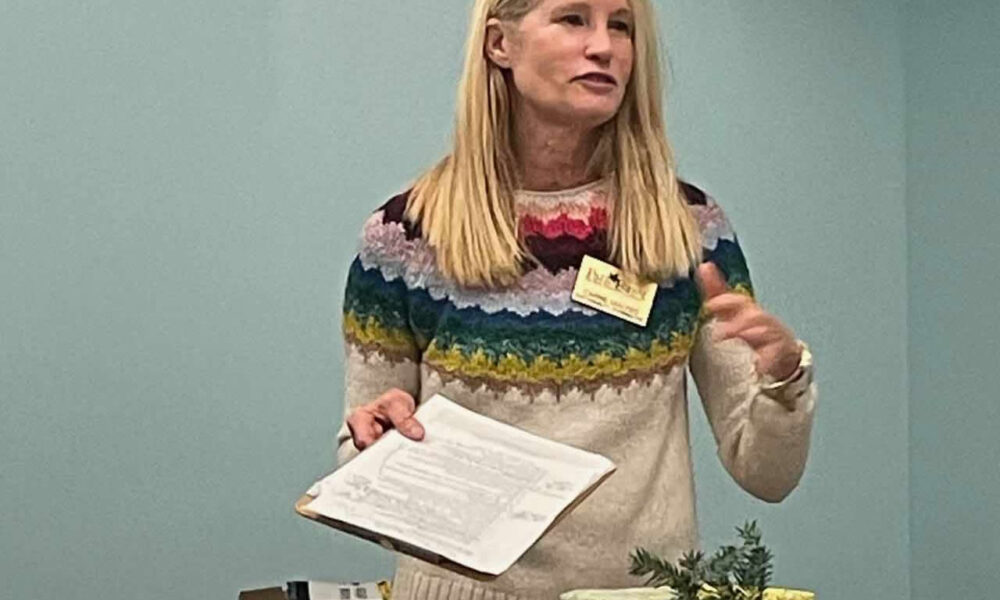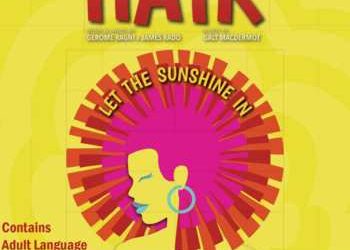
Park Forest, IL-(ENEWSPF)- Carrie Malfeo, Park Forest’s Sustainability Coordinator, presented tips and advice on having an eco-friendly holiday and reducing waste during the holiday season. Malfeo was part of the Park Forest Public Library’s final “Potpourri of Lectures” for 2023 on November 30.
“There is 25% more waste created between Thanksgiving and the Christmas holiday season than at any other time of the year,” according to Malfeo. She shared some commonsense tips on how residents can help reduce the environmental impact of the holidays.
Gift Buying Tips for an Eco-Friendly Holiday
The first area Malfeo addressed was gifting and using a “5 gift rule” to minimize excess purchasing. The rule states that purchases should address five areas: something you want, something you need, something to wear, something to read, and something to share. Adhering to the rule, or something close to it, will help avoid purchasing gifts that are likely to end up unused.
She also had numerous tips to help reduce waste when shopping. Bring your own bags to stores, do online shopping early and ask for grouped item deliveries, search for items made from or packaged in recycled materials, and visit fair trade or organic marketplaces. All of these will help to reduce the environmental impact.
Buying locally whenever possible helps support local merchants. It reduces the impact of packaging and shipping the purchased items. Gift cards to local merchants are also options to be considered.
Rather than focusing on items purchased from a store, Malfeo encourages giving homemade presents, such as crafts or food items that are often well appreciated. Sharing “experiences” such as tickets to an event is also a great, environmentally friendly way to gift.
Eco-Friendly Holiday Gift Wrapping Do’s and Don’ts
A common belief that many people have during the holidays is that all gift wrapping is recyclable. Unfortunately, that is not the case.
Malfeo quoted the environmental group Earth91’s gift wrapping statistics: “4.6 million pounds of gift wrapping is used in the United States each year. Of that, 2.3 million pounds ends up in a landfill.”
Wrapping paper that is shiny or has glitter cannot be recycled. Only plain wrapping paper is acceptable. Tissue paper and ribbons are also not recyclable. Placing such items in the recycling bin can result in an entire truckload of otherwise recyclable material ending up in a landfill.
Malfeo suggests that residents save and reuse old boxes, tissue paper, and wrapping paper. She also suggested that they get more creative in their wrapping choices by using old newspapers, paper maps, or even bags made from old clothes.
Eco-Friendly Holiday Decorating
Festive decorations are a highlight of the holiday season and Malfeo had some helpful tips to consider. The use of LED lights consumes far less electricity than conventional lights, and the use of a timer can optimize when those lights are on.

Tossing strings of broken or unneeded lights in the recycling bin is one of the biggest environmental problems during the holidays. The strings can get caught in the machinery and cause the recycling process to halt while the strings are manually cut away. Residents can dispose of unwanted strings in bins found in the Park Forest Village Hall lobby. Gaby Iron & Metal will collect and recycle the strings. The bins will be in place until January 19.
Fresh vs. Artificial Tree? The Eco-Friendly Holiday Decision
The debate about whether it is more environmentally friendly to have a fresh tree versus an artificial tree is common this time of year. While artificial trees can be reused for multiple years, recent studies have shown that an artificial tree must be used for at least ten years to have the same carbon footprint as a real tree. Even after ten years, the plastics, PVCs, and metals used to create the artificial tree are not easily composted and contribute to the landfill problem.
Malfeo presented a video from the One Tree Planted organization highlighting the advantages of using a real tree versus an artificial one.
Take a look:
Most environmental groups recommend a live tree, especially one from local, bio-diverse farms that often plant 1-3 seedlings for every tree cut.
Park Forest offers a fresh tree recycling program. Residents can drop off their trees (ornament-free and not in a bag) at the Aquacenter parking lot. The Village accepts trees beginning December 26 through January 19. The Parks & Recreation Department will compost the trees in village parks or make the compost available for residents to use in their yards and gardens.

Malfeo noted that the most environmentally friendly tree is one you replant outside after the holidays. Such options might be unavailable for most people.
Entertaining in an Eco-Friendly Manner
Having a large gathering during the holidays is a tradition for many families, and Malfeo had a few suggestions to consider.
Again, buying locally is always a good idea to minimize packaging and transportation. Using cloth napkins, tablecloths, and reusable dishes will make a sizable dent in the waste produced. Run the dishwasher only when full. Be sure to send guests home with leftovers packed in glass jars or leftover to-go boxes.
If you have aluminum catering trays or pie pans, Malfeo says to place them in the recycling bin once cleaned.
Malfeo also reminded residents that Park Foresters can compost their food waste by arranging with Urban Canopy. The company will provide customers with a five-gallon bucket collected every other week for a cost of $30 per month.
The Post-Holiday Waste
The question of what to do with all the old electronics, TVs, and batteries is common. Malfeo was ready with suggestions.
For batteries, there is a battery recycling bin in the lobby of the village hall.
For electronics and televisions, residents can wait until the Recyclefest in July, or they can take their items to the Center for Hard to Recycle Materials (CHARM) located at South Suburban College, 15800 S. State Street in South Holland.

CHARM accepts a wide variety of household waste materials. For details, consult the CHARM website on acceptable items and days/hours of operations. Note: televisions are only accepted on the second Saturday of the month.
A Journey Not a Goal
Adhering to the numerous guidelines for having an environmentally friendly holiday can be challenging. Malfeo encourages residents not to be overwhelmed. Whatever steps they take to reduce waste will help. “Sustainability is a journey and not a goal.”









